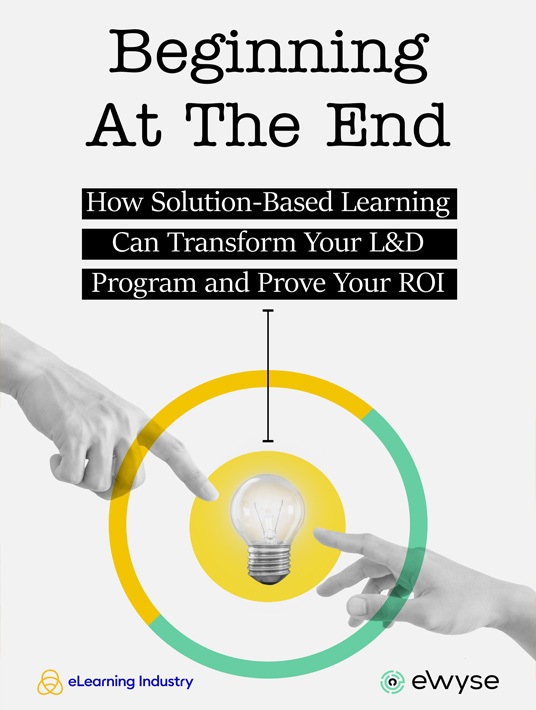How To Win Support For Your Solution-Based Learning Program
Although L&D and HR professionals play an essential role in an organization's growth, they often face several challenges when they try to establish new learning programs. Those can be shifts in business priorities, low engagement, or budget constraints. This is why securing support and internal buy-in is crucial if you want to implement solution-based learning. Funding is only half the battle, as you also need to consider your team's workload, in-house assets, and employees' preconceptions about training. This article highlights insider secrets to make a business case that wins over the entire team.

Making A Solid Business Case
1. Identify Organizational Challenges
Solution-based learning can help you disclose the source of the problem through surveys, interviews, personal observations, performance data, and other diagnostic methods. However, you can identify the symptoms beforehand to start building a solid foundation that can support your case and highlight the importance of a solution-based learning program. For example, your marketing team isn't nurturing enough leads or hitting their KPIs. It's best to do this on a case-by-case basis when it comes to stakeholders. For instance, the finance department tends to focus on money, while Subject Matter Experts (SMEs) that will be a part of the project worry about heavier workloads and lack of time. Then there's the C-level, which is more concerned about reaching KPIs. Create profiles for each group to map out their expectations and aims.
2. Align Solution-Based Learning With Business Needs And Aims
With solution-based learning, you'll need to set specific learning objectives that can solve the company's challenges in the most cost-effective way. For example, if you've found that the teams in your company struggle to collaborate, your L&D program could include training sessions about communication and conflict resolution skills or teamwork activities. That said, at this stage, it's difficult to set feasible objectives because you haven't yet identified the root of the problem through needs analysis and consultancy. You can, however, clarify your business needs to have a higher chance of securing the buy-in. What's your organization's five-year plan? Do you plan on expanding into different markets in the near future? How much room do you have in your budget for L&D? You may not know which initiatives you're going to launch or the why behind skill and knowledge gaps, but you do have a general sense of what you're working with and working towards.
3. Collect Evidence To Support Your Case
Don't just settle for the ideas. To make the business case more compelling, you need to support it with evidence. This can be employee turnover rates, performance data, or even success stories from companies that have implemented solution-based initiatives. This way, you can strengthen your business case by not just pointing out all of the issues you're currently contending with but offering viable solutions that have already worked for other organizations.
4. Address Stakeholders' Concerns
Now that you have a clear idea of what each stakeholder group hopes to achieve, tailor your plan of action according to their different perspectives. For example, the upper management and, specifically, the chiefs of departments in your company want to hear about the time and cost savings that will be achieved through solution-based learning programs. Mention that employees will learn more efficiently if they're provided with targeted training and that the program will address the needs of each department. On the other hand, you need to emphasize the expectation of a higher ROI for the finance department. When presenting evidence, opt for metrics and financial data. When communicating with SMEs, mention that the proposed initiatives can help them transfer knowledge more effectively and efficiently.
5. Engage Stakeholders As Soon As Possible
Be prepared to listen to everyone's thoughts when presenting the business case for solution-based learning. For instance, some stakeholders may express their worries about content creation costs, and employees may wonder how much of their time they'll need to invest in training. They need to be able to voice their opinions openly so that you can alleviate their doubts one by one. In fact, it's best to think one step ahead and research the most common obstacles or potential risks. For example, list the top 5 apprehensions or questions that your finance manager may have and have your answers at the ready.
Conclusion
Follow the above tips to get everyone on board and prove that solution-based learning is the best option for your organization, especially if you choose an eLearning agency that knows the ins and outs of needs analysis and engaging curriculum design.
Download the eBook Beginning At The End: How Solution-Based Learning Can Transform Your L&D Program And Prove Your ROI today to discover how you can leverage the solution-based approach to achieve your objectives and make your eLearning development process more problem-centered. You can also listen to the eLearning Unscripted podcast today to delve deeper into the solution-based strategy and all the benefits it has to offer.








